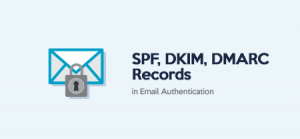Now, more than ever, more business owners are beginning to see and use email marketing as a veritable tool to foster productive business relationships with their followers. An effective email marketing campaign breeds more brand loyalists, considering the regular communication involved.
Getting the best out of email marketing is only feasible when emails are delivered as expected. Hence, it is essential to get familiar with the concept of email blacklisting. There are cases where domains are blacklisted, thus preventing the onward delivery of emails to inboxes of recipients.
In this article, we will discuss the basics of blacklisting, proffering a detailed answer to the question – “What is a blacklist?” in the process. You will also get tips on the best way to approach cases of blacklisted domains.
What is an Email Blacklist?
Everybody now takes security seriously on the internet, including email providers. To keep their users safe, email providers tend to block (blacklist) any domain perceived to be sending spams or malicious content as emails to their users. It is, however, important to note that email blacklist is just one of the many issues that may prevent your followers from getting your emails.
An email blacklist is a real-time list of IP addresses or domains believed to be sending spam. Organizations such as internet service providers (ISPs), free mailbox providers, and anti-spam vendors use these to avoid spam from reaching their networks.
Websites are not left out of the blacklist phenomenon, with some web browsers programmed to block potentially dangerous domains automatically.
Email Blacklists – The Modus Operandi
For ease of understanding, let us describe email blacklist as that solitary confinement where spamming mails and their senders are kept. However, not every offender on a blacklist is a confirmed spammer – some are there by accident. You will find out more about this when you learn the modus operandi of blacklists.
What blacklisting entails is the identification of IPs and domains used in sending out mass email spam, and grouping them on a list. Most email or internet service providers have their blacklists, against which they check the IP of each incoming email sender. Once they discover that the sending IP is present on their blacklist, they reject the email, making sure it does not get to the inbox of the recipient.
The rejected email is subjected through a spam filter. If it comes out clean, it proceeds to the recipient’s inbox. If found suspicious, such an email is flagged as spam and ends up destructed or bounced.
Building a Blacklist Database
Database blacklists are built on spam reports. The blacklist receives a hit each time a human or spam filter flags an email as spam. The sender gets a warning. If the warnings continue due to continuous complaints, the IP or domain eventually gets blacklisted.
There may also be personal requests to blacklist a particular domain or IP. Once such requests are backed by proof that the sender is not a spammer, the said IP or domain will be blacklisted and added to the blacklist.
The bounce rate is a huge determining factor for blacklisting an IP address or domain (or not). If the bounce rate is considerably high, it triggers the ISP or email provider, and such an IP address or domain is blacklisted.
Let us also mention the email engagement level, as a yardstick n determining the reputation of any email. If the recipients interact well with the emails, i.e., by opening, reading, and replying to them, the email service provider considers such emails ‘welcomed.’ Conversely, if they just delete them without opening or reading, such emails may be regarded as unwanted, and hence, flagged. Email engagement level is not always applied when assessing sending reputation. However, it will be safer to send emails that your recipients can easily engage with.
Can a Sender be Blacklisted Without Being a Spammer?
An email sender may be blacklisted if they adopt a wrong approach to sending mass emails. One of the most common instances of this wrong approach is sending to unverified email addresses. Others include the use of spam words, zero personalization, sending too many emails out at once, and using a poor email database.
While it can be tricky to leave out spam words in email text, especially in real estate and finance industries, the use can be reduced to the barest minimum.
The IP red-flagging process of each blacklist is unique. You will find more information about this on your blacklist’s website, although it is mostly about technical or company policies.
How to Know if a Domain is Blacklisted?
The best way to know if your domain is on a blacklist is to check. Hence, it is advisable to do a regular email and website blacklist checks. Also, ensure a consistent and practical assessment of your email marketing campaign to ensure that your deliverability is not dropping.
The common blacklists you may find yourself on include Spamcop, MTXToolBox, Spamhaus, and others. Only use tools that can check through several blacklists for your blacklist check, after all, not being in one list does not mean you are not in others.
While there are numerous blacklists out there, you can start your check from the few listed below:
- SURBL – This is a list of websites usually included in unwanted messages.
- Spamhaus – The Spamhaus Project covers several DNS Blacklists (DNSBLs) in its bid to uncover and track spam sources and protect recipients from spams. You can only get off this list by going through the Spamhaus blocklist removal center.
- Spamcop – The SpamCop Blocking List (SCBL) contains the IP addresses of senders of mails marked as spam by SpamCop users.
- MultiRBL – This multiple DNS blacklist service works by cross-referencing other backlists by domain, IPv6 or IPv4. It is free.
- MXToolBox – What the MXToolBox does is to confirm whether or not your IP address or domain is blacklisted. It also helps with the assessment of your DNS configuration.
- Invaluement – This anti-spam DNSBL blocks the kinds of spam the conventional detection methods usually miss, especially when the sender is sending unwanted bulk emails.
- Barracuda Reputation Block List – This is another free DNS Blacklist containing the IP addresses that have been reported to have sent spam.
How to Remove an IP from a Blacklist?
Now that you have found your email server IP or domain on one or more of the lists above, the way forward will be to get your IP removed from them.
The easiest way to go about this is to understand the delisting process of each of the blacklists. While there are slight differences, they mostly demand proof that you are not a bot. It is also advisable that you discover and eliminate the reason for the blacklist in the first place.
In some cases, you may be asked to submit a delisting request to the owners of the blacklist, where you will carefully present your case. This can be via email or by filling a special form.
In situations where the blacklist has no definite delisting process, your IP will most likely be removed from the blacklist after some time. Keep in mind that getting off a blacklist does not translate to total pardon. The blacklist will continue to monitor your email sending behavior, so ensure that you fix the problem source before sending emails again.
Does Delisting Help in Regaining Excellent Deliverability?
Getting delisted does not automatically translate to excellent deliverability. It is best to consider delisting as the first step in a complicated recovery process. After delisting, you should rebuild your IP or domain reputation to be as good as possible.
It is advisable to send only a few emails per day for starters and choose your recipients carefully. You may stick to friends and family for the early stages. Implore the recipients to engage with the emails, to paint the conversation as neutral as possible.
If your first emails are delivered into the spam box, ask the recipients to unmark them. This ensures that the spam filters start treating subsequent emails from the same sender as legitimate and relevant.
Also, find out the root cause of the blacklisting. Did you send irrelevant emails? Were the outgoing messages above the limit per time? Did you use an outdated prospect list? Was your hard bounce rate high? Identify the problem and proffer a lasting solution and implement the same in your future campaigns.
You can expect your email server IP and domain to gradually develop a much-improved reputation if you are committed to the recovery process while avoiding all spam-like moves.
How to Avoid Being Blacklisted?
Blacklist offenses or activities preceding blacklisting are not always intentional. The reasons, sometimes, are harmless, for example, when you send a higher number of emails and within shorter periods. This may be categorized as spam by the blacklisting company.
However, you can avoid the problem of blacklisting altogether by applying some essential tips, most of which are considered as email marketing best practices. These include:
- Personalizing your content and dividing your subscriber lists. This ensures that recipients only get emails that match their interests.
- Building a personal email list instead of buying. The former is done by convincing your prospective recipients of the perks of being your brand follower and loyalist.
- Personalized email list improves engagement, considering that all the email addresses are valid.
- Include domains of links included in your emails when doing a blacklist check. This uncovers dangerous links that may put you at the risk of a blacklist.
For every brand that wants to communicate with followers regularly and directly, email marketing remains one of the best channels to achieve this. And staying off every blacklist is crucial to a successful email marketing campaign. Make sure your emails are delivered as expected and avoid all forms of domain blacklist.





